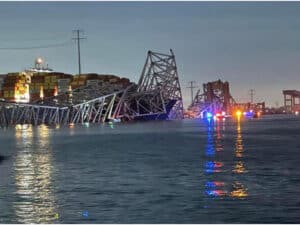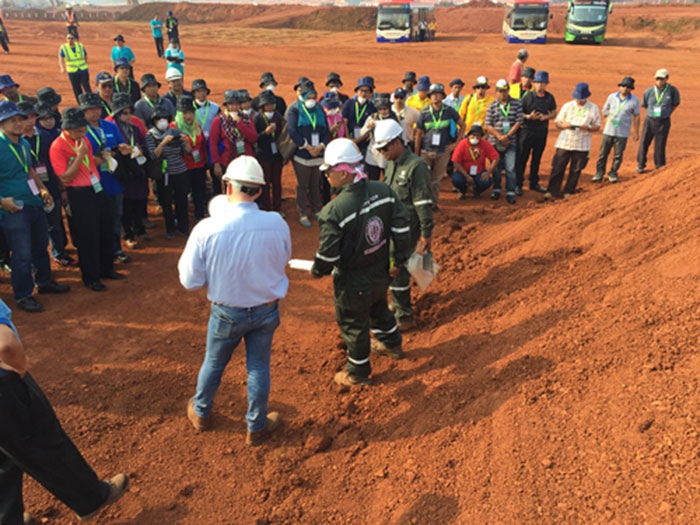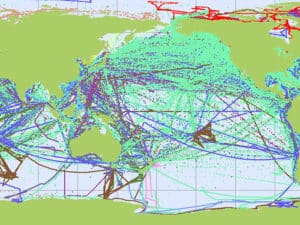
New understanding of hazards posed by bauxite cargoes
Written by Nick Blenkey
Research presented to IMO found that certain forms of bauxite with a large proportion of smaller particles could be subject to a newly-identified phenomenon of "dynamic separation" when there is excess moisture in the cargo
SEPTEMBER 19, 2017 — A working group established by IMO — the Global Bauxite Working Group — has upended conventional thinking on what can cause bauxite cargoes to rapidly shift, causing ships to capsize
As a result, IMO is being recommended to amend the way that bauxite is classified in the IMSBC Code (International Maritime Solid Bulk Cargoes Code), the industry rulebook on how to deal with bulk cargoes. In the meantime, IMO’s Sub-Committee on Carriage of Cargoes and Containers has provided new guidance on carriage of bauxite, in the form of a circular aimed at shippers, terminal operators, shipowners, ship operators, charterers, shipmasters and all other entities concerned.
The circular requests that extreme care and appropriate action be taken, taking into account the provisions of relevant IMO instruments, when handling and carrying bauxite in bulk.
The circular takes immediate effect, ahead of the 2019 scheduled updating of the the IMSBC Code.
The Global Bauxite Working Group was established following a number high profile incidents involving bauxite cargoes, and mandated to research the shipping related characteristics of bauxite and to provide a peer reviewed report to last week’s meeting of the subcommittee.
According to the International Dry Bulk Terminals Group (DBTG), which has representative status at IMO, the working group has discovered radically new information on cargoes that liquefy and the effect on ship stability.
The working group’s research studied bauxites representing over 90% of the seaborne traded bauxites taking in to account the main trade route sea conditions. The work was supported by leading independent research centers and scientists and involved both laboratory and shipboard testing.
The working group’s research establishes that bauxite cargoes do not actually liquefy or develop a flow state in the way which had been previously commonly believed , which was that a cargo with excessive moisture content develops a flow state due to the vibration and motion of a ship during a voyage, causing it to shift or flow to one side.
The working group, though, identified a previously unknown phenomenon known as “dynamic separation”.
According to DBTG Executive Director Nic Ingle this occurs when a bauxite cargo with a moisture content in excess of its Transportable Moisture Limit (TML) and a high proportion of fine material slumps due to the dynamic motion of the ship at sea. As it settles and compacts, the water in the cargo separates and is expelled as a slurry to the surface of the cargo. With the flattening of the cargo surface, the expressed slurry then forms a free surface across the hold. This causes a Free Surface Effect resulting in an immediate virtual reduction in the ship’s initial stability. Depending on the number of holds affected and other factors, this can result in the rapid destabilization and sinking of the vessel.
The work identified that early detection of the free surface effect on the vessel may be possible, as the free surface oscillates differently to the ships roll, resulting in a wobbling motion that would alert the crew that the cargo is starting to become unstable.
The working group’s findings have obvious implications for other Group A cargoes and further research may be required in relation to their behavior under similar conditions.
The working group recommends that the IMO consider amending the IMSBC Code to include a new schedule for Group A bauxite (a cargo which may liquefy or undergo dynamic separation if shipped at a moisture content in excess of its TML) and revision of the current classification of bauxite as Group C (a cargo which is not liable to liquefy or dynamically separate) based on the fines content of the material. It also recommends a new TML test procedure for bauxite.
These amendments will not affect the shipper’s responsibilities to correctly declare their cargoes including proper sampling, testing and certifying the TML and moisture content of the cargo to be shipped, and to ensure that it is shipped with moisture content less than its TML, in accordance with the requirements of the IMSBC Code.
As solid bulk terminals also have specific responsibilities in relation to the loading of these cargoes, Nic Ingle says that the DBTG, through the collective knowledge and vast experience of its global membership, will continue to support all members and give them a recognized and strong voice at IMO.





Leave a Reply
You must be logged in to post a comment.